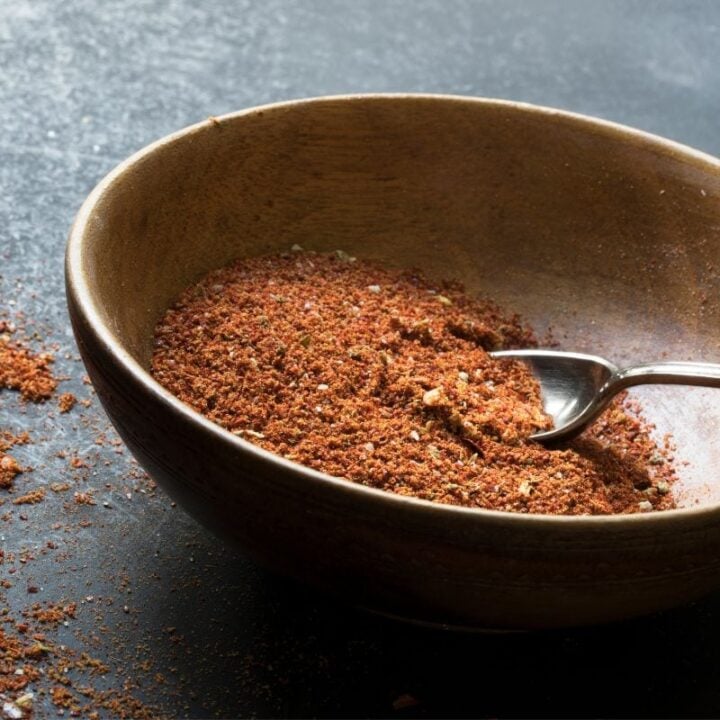Tacos are a crowd-pleasing favorite, and the secret to taking them from ordinary to extraordinary lies in the perfect blend of taco seasoning. While store-bought options are readily available, making your own homemade taco seasoning allows you to control the ingredients and ensures that it meets any dietary needs. Let’s explore the main ingredients and the ideal way to season your taco meat!

Are all taco seasonings gluten-free?
Unfortunately, not all taco seasoning mixes are gluten-free. Some commercial brands may contain additives or fillers that contain gluten, which can be a concern for individuals with gluten sensitivities or those following a gluten-free diet. The safest way to enjoy gluten-free taco night is by crafting your own taco seasoning at home with spices and herbs. And we’re here to help!
What is the main ingredient in this seasoning?
The star ingredient in any taco seasoning is chili powder. This fiery and flavorful spice not only provides the essential kick to your tacos but also infuses them with a beautiful red hue. To craft your own seasoning, combine chili powder with other complementary spices to create a balanced and mouthwatering blend.
What else is in this taco seasoning?
For this taco seasoning blend, you’ll need:
- Chili powder
- Ground cumin
- Salt
- Pepper
- Garlic powder
- Paprika
- Onion powder
- Red pepper flakes
- Ground oregano

How many tablespoons of taco seasoning per pound of meat?
The ideal ratio of taco seasoning to meat is two to three tablespoons per pound of meat. Of course, you can adjust the quantity according to your personal taste preferences. If you prefer mildly spicy taco meat, reduce the seasoning slightly, or if you want an extra burst of spice, feel free to add a bit more. Tacos are all about customization, so don’t be afraid to get creative!
How much taco seasoning is in a packet?
A standard packet of taco seasoning contains around three tablespoons.

Do you season meat before or after cooking?
We recommend adding the taco seasoning after browning the meat. If you add the taco seasoning and water beforehand, you are boiling the meat, and it won’t be as flavorful. Instead, brown your ground beef, chicken, or whatever meat you are using in a large skillet. Add the taco seasoning and 1/4 cup water, and simmer until the sauce has thickened and all the meat is seasoned.
Homemade taco seasoning is the key to elevating your taco game while ensuring it’s gluten-free. By using chili powder as the main ingredient and seasoning your meat before cooking, you’ll unlock a burst of mouthwatering flavors in every bite. Embrace the freedom to customize your seasoning and enjoy the journey of crafting the perfect taco for you and your loved ones! Happy taco-making!
Homemade Taco Seasoning Recipe
Now that you know the importance of homemade taco seasoning, let’s dive into an easy and quick recipe:

Gluten-Free Taco Seasoning
Taco Tuesday can easily be set up to be naturally gluten-free! It all starts with this homemade gluten-free taco seasoning.
Ingredients
- 1 tablespoon chili powder
- 2 teaspoons cumin
- 1 teaspoon kosher salt (see notes)
- 1 teaspoon black pepper
- 1/2 teaspoon garlic powder
- 1/2 teaspoon paprika
- 1/4 teaspoon onion powder
- 1/4 teaspoon red pepper flakes (see notes)
- 1/4 teaspoon oregano
Instructions
- Mix all ingredients together.
- To use: Brown 1 pound of meat of your choice. Add the seasoning and 1/4 cup of water. Simmer until sauce has thickened, 2-3 minutes.
Notes
- Adjust the kosher salt and red pepper flakes to your preferences. You can always add more later!
- To save yourself some time later, you can scale up this recipe as much as you'd like. Store the excess in an airtight jar.
- About three tablespoons of this spice mix is the equivalent of one packet of store-bought taco seasoning.
Nutrition Information:
Yield: 1 Serving Size: 1Amount Per Serving: Calories: 56Total Fat: 2gSaturated Fat: 0gTrans Fat: 0gUnsaturated Fat: 2gCholesterol: 0mgSodium: 1499mgCarbohydrates: 10gFiber: 5gSugar: 1gProtein: 3g
At Wholefully, we believe that good nutrition is about much more than just the numbers on the nutrition facts panel. Please use the above information as only a small part of what helps you decide what foods are nourishing for you.


